Occupational Safety Training for Operating a Polishing Machine
99,000 ₫
Note: The above price is calculated for one person and may vary depending on the number of trainees participating in the course and market fluctuations. For more accurate pricing support, please refer to the price list or contact our consultants directly.
Occupational safety is an important issue when operating a polishing machine and needs to be addressed promptly to ensure the health and safety of workers and enhance the reputation of businesses here. The Occupational Safety Training course is one of the effective solutions to raise awareness on preventing workplace accidents for workers when operating a polishing machine.
Table of Contents
Toggle1. Overview of Polishing Machines
a. What is a Polishing Machine?
A polishing machine, also known as a surface polisher or buffing machine, is a device used to create a smooth and shiny surface on items such as cars, jewelry, tiles, furniture, and many other objects. The polishing machine works by using a polishing wheel or pad, often made of abrasive material, along with applied pressure and polishing fluids such as polishing wax or compounds.
Polishing machines can remove scratches, uneven surfaces, or other marks on an item. They can also produce either glossy or matte effects depending on the type of polishing pad and compound used. Polishing machines are commonly used in industries such as automotive, jewelry manufacturing, construction, as well as in the maintenance and beautification of furniture and household items.
Polishing machines vary in size, power, and design, depending on the specific application and material to be polished.

b. How Polishing Machines Work
The working principle of a polishing machine relies on mechanical, abrasive, and chemical processes to make a surface smooth and shiny. Below is an overview of how a polishing machine operates:
- Polishing pad or wheel: The machine uses a pad or wheel as the contact surface with the item to be polished. The pad or wheel usually has an abrasive surface made from materials such as rubber, ceramic, metal, or natural fibers.
- Pressure: Polishing machines can apply pressure to the surface of the item. This pressure helps push the pad or wheel against the surface to carry out the polishing process.
- Polishing fluid: To achieve a smooth and shiny finish, polishing machines often use polishing fluids such as wax or compounds. These fluids reduce friction and help create a glossy layer on the surface.
- Abrasion and smoothing: As the machine operates, the pad or wheel rotates and contacts the item’s surface. This process removes scratches, uneven surfaces, and other marks while smoothing the surface. Polishing fluid aids the abrasion process and prevents overheating or damage.
- Shine: Once polishing is complete, the surface becomes glossy due to the removal of impurities and the creation of a smooth, shiny layer. The combination of mechanical abrasion and polishing fluid produces this effect.

c. Industries That Use Polishing Machines
Polishing machines are widely used across many industries to enhance the surface quality of products. Some major industries include:
- Automotive: Used to polish car surfaces, such as paint, aluminum alloys, and interior details, improving appearance and value.
- Jewelry manufacturing: Used to smooth and shine surfaces of gold, silver, and other precious metal items.
- Tile and stone manufacturing: Used to polish natural stone and tiles for a smooth, glossy finish.
- Electronics manufacturing: Used to improve the surface quality of electronic components, such as computer casings, mobile phones, and circuit boards.
- Furniture manufacturing: Used to polish wood, metal, or plastic surfaces for a more attractive finish.
- Plastic and composite products: Used to polish plastic and composite products, such as watch cases, sports equipment, and other items.
- Wood processing: Used to smooth and polish wood surfaces, including furniture, flooring, and decorative items.
- Toys and household products: Used to create glossy and smooth finishes on household items and toys.
2. Overview of Safety Training for Polishing Machine Operation
a. What is Occupational Safety Training?
- Occupational safety training for polishing machine operation consists of sessions that raise awareness on preventing workplace accidents. Employees who work directly with polishing machines belong to Group 3.
- The training helps employees identify and prevent hazards, reducing risks of workplace accidents.
REGISTER FOR OCCUPATIONAL SAFETY TRAINING
b. Training Duration
Initial Safety Training Duration:
- Total training time is at least 24 hours, including testing.
- 8 hours of theory on safety policies and labor hygiene laws
- 8 hours of theory on basic occupational safety knowledge
- 4 hours of theory on specialized training content
- 2 hours of practical exercises on specialized content
- 2 hours of final theoretical test
Training centers may divide sessions depending on employee schedules, typically spanning 6 sessions over 3 days if the company allows continuous training.
Periodic Safety Training:
- Before an employee’s occupational safety card expires, they must undergo periodic safety training, with a duration of at least 50% of the initial training.
Explanation: The total duration of periodic safety training is at least 12 hours, including testing. After completing the training and passing the test, employees will have their occupational safety card renewed.
c. Training Content
| No. | TRAINING CONTENT | TRAINING DURATION (HOURS) | |||
| Total | Including | ||||
| Theory | Practical | Test | |||
| I | Safety policies and labor hygiene laws | 8 | 8 | 0 | 0 |
| 1 | Overview of legal regulations on occupational safety and hygiene. | 6 | 6 | ||
| 2 | Standards and technical safety regulations. | 1 | 1 | ||
| 3 | Specific government regulations on safety and hygiene when constructing, expanding, or modifying production facilities, and operating machinery, equipment, or materials with strict safety requirements. | 1 | 1 | ||
| II | Basic occupational safety knowledge | 8 | 8 | 0 | 0 |
| 1 | Knowledge about hazards and harmful factors at the workplace. | 4 | 4 | ||
| 2 | Methods for improving working conditions. | 1 | 1 | ||
| 3 | Safety culture in production and business. | 1 | 1 | ||
| 4 | Rights and obligations of employers and employees; policies and regulations on occupational safety; functions of safety networks. | 1 | 1 | ||
| 5 | Safety regulations, signage, use of protective equipment, first aid skills, and occupational disease prevention. | 1 | 1 | ||
| III | Specialized training content | 6 | 4 | 2 | 0 |
| Knowledge about machines, equipment, hazardous materials; risk assessment and management; safe work procedures for machines and materials with strict safety requirements. | 6 | 4 | 2 | ||
| IV | Final safety training assessment | 2 | 2 | 0 | 0 |
| Total | 24 | 22 | 2 | ||
See more training content for all 6 groups
d. Occupational Safety Card
After completing the safety training and passing the test, employees will be issued an Occupational Safety Card (commonly known as the Group 3 Safety Certificate).
The Group 3 safety card shows personal information such as name, date of birth, job, and work environment. It also includes training duration, official stamp, and signature confirming completion.
According to regulations in Clause 2 of Article 24 of Decree 44/2016/ND-CP, there are two cases:
- If there is a labor contract between employer and employee, the employer must sign and stamp the safety card after the employee completes training and passes the test from the authorized training unit.
- If the employee is freelance or seasonal and does not have a labor contract, the training unit must sign and stamp the card after completion and passing the test.

Group 3 Occupational Safety Card for Polishing Machine Operation
3. Hazards When Operating a Polishing Machine
Operating a polishing machine can present several potential hazards if safety rules are not followed and the machine is not used carefully. Here are some hazards when operating a polishing machine:
- Physical injuries: If safety rules are not followed and focus and performance are not maintained, users may be at risk of injury from the polishing disc or spinning wheels. Contact with moving parts can cause serious injuries.
- Dust and abrasive particles: Polishing often generates dust and abrasive particles, especially when working on metal or tiles. Inhaling this dust and particles can be harmful to health. Users should wear respiratory protection and work in a well-ventilated area.
- Fire and explosion risk: Using a polishing machine in environments with flammable materials, such as near oils or chemicals, increases the risk of fire or explosion. Follow safety rules regarding electricity, chemicals, and the working environment.
- Electrical hazards: If the polishing machine is not properly maintained or has damaged wiring, electrical hazards can endanger users.
- Unsafe use of polishing fluids: Using unsafe or incorrect polishing fluids may damage the item surface, generate smoke, or harm health.
- Not following operating instructions: Ignoring the manufacturer’s instructions or not understanding how to operate the machine can lead to unsafe use and increase risk.

4. Measures to Prevent Workplace Accidents When Operating a Polishing Machine
To control and prevent workplace accidents when operating a polishing machine, the following safety measures should be followed:
- Training: Ensure all employees involved in operating polishing machines are fully trained on machine usage, safety rules, and potential hazards. Training should be regularly updated to expand knowledge of labor safety.
- Personal Protective Equipment (PPE): Ensure all users wear appropriate PPE, including safety glasses, masks, dust-resistant clothing, gloves, and helmets. PPE protects workers from hazards such as dust, abrasive particles, and injuries.
- Machine maintenance: Conduct regular maintenance and inspection of polishing machines to ensure proper operation. Ensure that polishing discs or wheels are not damaged and that electrical and mechanical systems function normally.
- Use safe polishing fluids: Select and use polishing fluids recommended by the manufacturer or experts. Polishing fluids should not contain compounds harmful to health or the environment.
- Dust and particle control: Implement dust control measures, such as extraction systems or enclosed work areas, to prevent dust and abrasive particles from spreading. Ensure workers wear protective eyewear and respiratory equipment.
- Maintain a safe workspace: Ensure the polishing machine is placed in a well-ventilated area with enough space to avoid collisions. Arrange tools and materials to prevent interference during operation.
- Supervision and compliance: Monitor employees during work to ensure adherence to safety rules. Establish reporting and rapid resolution mechanisms for safety issues.
- Follow manufacturer instructions: Adhere to the manufacturer’s operating and maintenance guidelines.
- Regular inspection of polishing machines helps detect safety issues such as damage or wear, reducing the risk of workplace accidents.
5. Benefits of Labor Safety Training
An Toàn Nam Việt provides the following benefits to businesses after completing labor safety training courses according to Decree 44/2016/ND-CP regarding occupational safety and hygiene:
- Workers can identify potential workplace hazards and take preventive measures to avoid accidents.
- Businesses can establish risk prevention measures in production, operation, and maintenance processes.
- Reduce costs associated with workplace safety risks.
- Uninterrupted production increases labor productivity and product quality.
- Ensure compliance with labor safety regulations, reducing legal risks.
- Enhance credibility and professionalism, boosting the business’s brand image.
Nam Việt’s training courses are designed to protect individuals from external hazards, helping them avoid injuries or, in severe cases, fatalities.
REGISTER FOR LABOR SAFETY TRAINING SERVICE
6. Customer Feedback After Completing the Training
An Toàn Nam Việt has many years of experience supporting businesses across Vietnam, especially in the southern provinces. This responsibility is highly valued, and thus our Labor Safety Training programs are increasingly professional. Our growth is fueled by positive feedback and suggestions from business partners. Below are testimonials from clients we have served.
See more customer interviews after using our services at An Toàn Nam Việt
7. An Toàn Nam Việt’s Labor Safety Training Capacity
An Toàn Nam Việt is a reputable and high-quality labor safety training center in Vietnam. Training sessions are conducted continuously at factories, production facilities, or construction sites nationwide (all 63 provinces of Vietnam).
REGISTER FOR LABOR SAFETY TRAINING SERVICE
License for labor safety training
- An Toàn Nam Việt has been inspected and certified by the Department of Safety, Ministry of Labor – Invalids and Social Affairs as qualified to conduct labor safety and hygiene training. This reinforces our labor safety training capabilities.

Training Materials and Lectures
- Before being used in labor safety training courses, materials are reviewed to ensure accuracy and effectiveness.
- Our instructors’ teaching methods follow the standards of An Toàn Nam Việt, developed by experts in occupational safety training for maximum knowledge retention.
Facilities
- Controlling classroom factors improves teaching efficiency and knowledge absorption.
- Our training facilities include spacious classrooms with standard lighting and training equipment.
8. Nationwide Reputable Labor Safety Training Center
At An Toàn Nam Việt, we prioritize labor safety training as a professional mission. We aim to teach workers how to protect themselves, contributing to national development.
To ensure effective training, we meticulously prepare tools, teaching equipment, curriculum, materials, sound, and lighting.
Our instructors are experts with years of experience, even conducting research on hazard identification across industries.
Lectures are practical, engaging, and easy to understand, helping workers absorb knowledge efficiently. All content complies with Decree 44/2016/ND-CP.
This enables workers to learn safety measures, protect themselves, and apply knowledge effectively in the workplace.
Our training center is proud to provide professional, reputable labor safety training with the following advantages:
- Competitive training costs without compromising quality.
- Flexible training schedules to fit company production.
- Quick certification process compliant with law.
- Experienced instructors.
- Controlled classroom environment enhances learning efficiency.
- Lectures tailored for workplace safety in enterprises.
- Dedicated and professional service ensuring accurate, fast support.

9. Additional Labor Safety Training Materials
- Labor Safety Training Materials
- Safety Materials for Operating Polishing Machines
- Labor Safety Training Test Set
- Polishing Machine Safety Quiz
- Polishing Machine Safety Training Slides
10. Labor Safety Training Activities
1 review for Occupational Safety Training for Operating a Polishing Machine
No comments yet

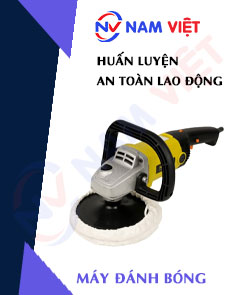
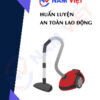
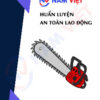




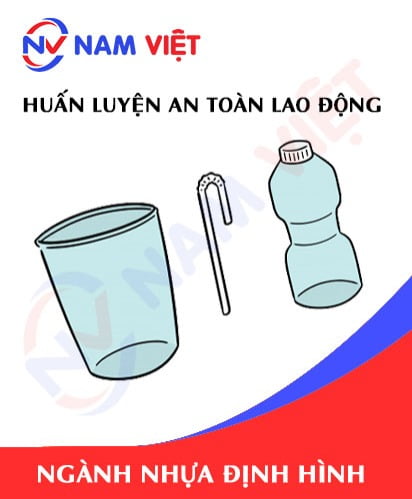

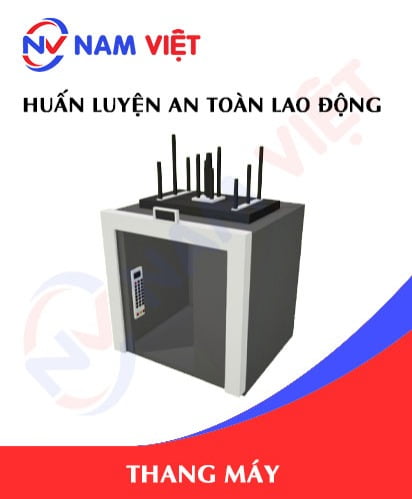

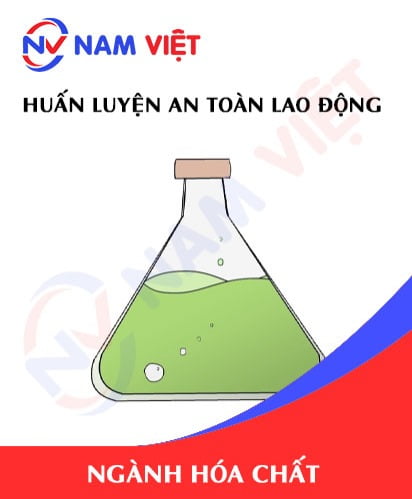
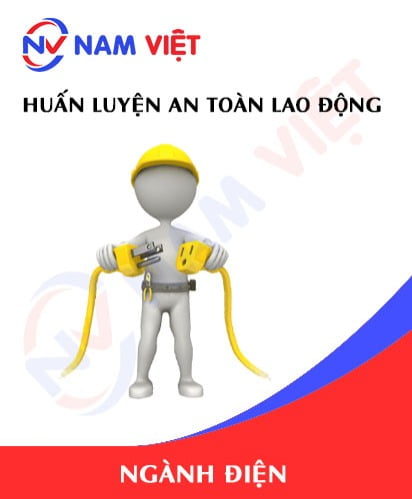

phanminhhang341
Đơn vị chuyên nghiệp về huấn luyện an toàn lao động